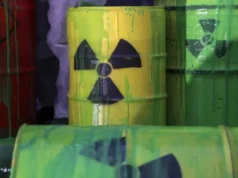Surge in organized crime under Trudeau’s watch

Organised crime and gang violence in Canada, which accused India of involvement in the assassination of a Khalistani operative earlier this year, have reached unprecedented levels during the second term
It’s not only India which has to worry about Canadian terrorists operating against Indian interests from inside Canada according to the findings. Even New Zealand now considers Canada a high risk source country through which methamphetamine is being imported into New Zealand. This drug is brought from Mexico and Thailand to Canada.
Australia is also fully aware that it has become a popular export destination for the Canadian drug cartels where 1 kg of methamphetamine fetches 400K AUD. 25% of the assessed criminal groups are reported to be involved in money laundering (ML), but the actual proportion is likely to be much higher, as ML is integral to an OCG’s ability to use its profits and is intertwined with all predicate crimes.
According to data compiled by one of Canada’s own government agencies, Criminal Intelligence Service Canada (CISC), which coordinates and shares criminal intelligence amongst member police forces, at least 3,000 gangs are operating in Canada, out of which some are so powerful that they have been classified into three threat levels.
As per the data, 14 of these gangs have been classified as National Level Threat and the crime they commit includes infiltrating police and security agencies. Those 14 “high-level threats” are operating in four provinces, the CISC report reveals: Ontario (6), Quebec (3), British Columbia (4) and Alberta (1). 37% of these are newly reported gangs, meaning that these came into existence in the last one year.
As per the report, these gangs are attempting to “infiltrate” government agencies and departments and have likely infiltrated some of the government agencies. According to CISC, Canada is presently battling a baffling number of 434 gangs, with roughly 7,000 members that are active at the national level.
Ontario has the highest number of such gang members in absolute terms, with 216 youth gangs and 3,320 youth gang members. Saskatchewan is second (28 youth gangs and 1,315 members), followed by British Columbia (102 youth gangs and 1,027 members). Significantly, 4% or 29 such organised criminal groups have managed to build influence or have access within Canadian public sector agencies or departments.
They are using this influence for interprovincial or international criminal activities. 81 of these criminal groups have invested into transportation and warehousing, 71 have put their ill-gotten money into the construction business and 25 of these criminal groups have invested in professional, scientific and technical services.
The inputs and intelligence gathered by CISC have further revealed that 57% of these organised crime groups (OCGs) have invested in public sector agencies. In total, 41% of the assessed OCGs are linked to a combined 1,682 businesses. The report has found that almost half (48%) of all the youth gang members are under the age of 18.
Most (39%) are between 16 and 18 years old. Of the total 434 gangs, 152 are orphan gangs, which means that they are working alone for now. More shockingly, almost one fourth of Canada (23.7% of all the jurisdiction) is now reporting the presence of organised criminal gangs. 20% of all murders in Canada were linked to these gangs.
On 18 June, Khalistani terrorist Hardeep Singh Nijjar was shot dead by six men who came in two getaway cars in British Columbia. His death had caused a diplomatic row between India and Canada, with Trudeau accusing India of carrying out armed operations on Canadian soil.
He has, till now, not offered any proof to substantiate these allegations. It is now widely believed that Nijjar’s death was the result of a gang-war. The failure of Canada to control these gangs has brought problems for the law and order machinery in other countries too as these gangs have established links with similar gangs operating in 52 other countries spanning across North America, Central America, Caribbean, Asia, South America, Europe, Africa and Australia.
The top five countries, as far as the Canadian gang’s international outreach is concerned, are the United States, Mexico, Colombia, China and UAE. These five countries are being used by Canadian cartels to procure chemicals that are used in the production of synthetic drugs, as well as source and transit countries for illicit drugs.
The UAE, a new addition to the “top 5” list, serves primarily to facilitate international financial and money laundering schemes, and as a transit country for the exportation of stolen vehicles. As per the report, these gangs have diversified their businesses in order to further their criminal activities and increase profits.
These gangs use strategic violence to maintain market shares, including extortion, intimidation, homicide, kidnapping, assault, and arson. Many use their association with street gangs to carry out criminal activities and violence on their behalf, insulating themselves from direct involvement.
Apart from these gangs, 30 plus mafia groups are believed to be operating in Canada. These mafia groups are predominantly based in Hamilton, Toronto and Greater Montreal.
Their network extends internationally into 13 countries, via member or associate travel, criminal enterprises, and private companies.
The findings by the Canadian intelligence agencies show multiple recent murders and targeted shootings of prominent members within these mafia networks having taken place. The report has further added that long-standing conflicts between factions will lead to further violence.
In the wake of these ongoing conflicts and subsequent likely deaths, resulting in potential power vacuums, violence is expected to continue as other members fight for control. The more powerful gangs are investing massively in the drugs market and are active in large-scale (several hundreds of kilograms) importation of methamphetamine, at times with other substances, such as cocaine.
The majority of these OCGs are based in British Columbia, Ontario, and Quebec, with links to national and international networks in countries in Asia, South America, and Europe.



